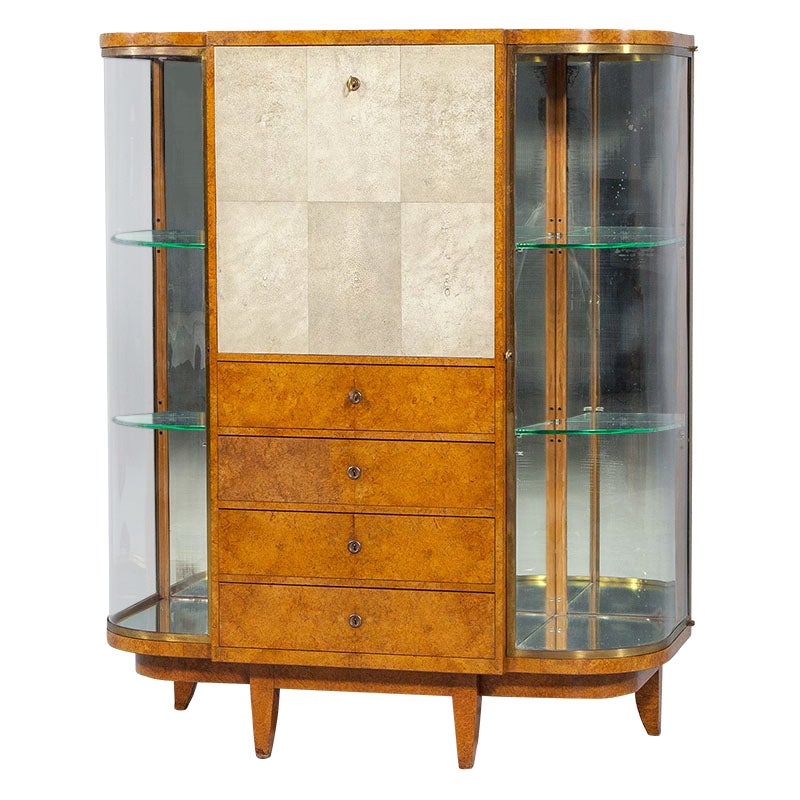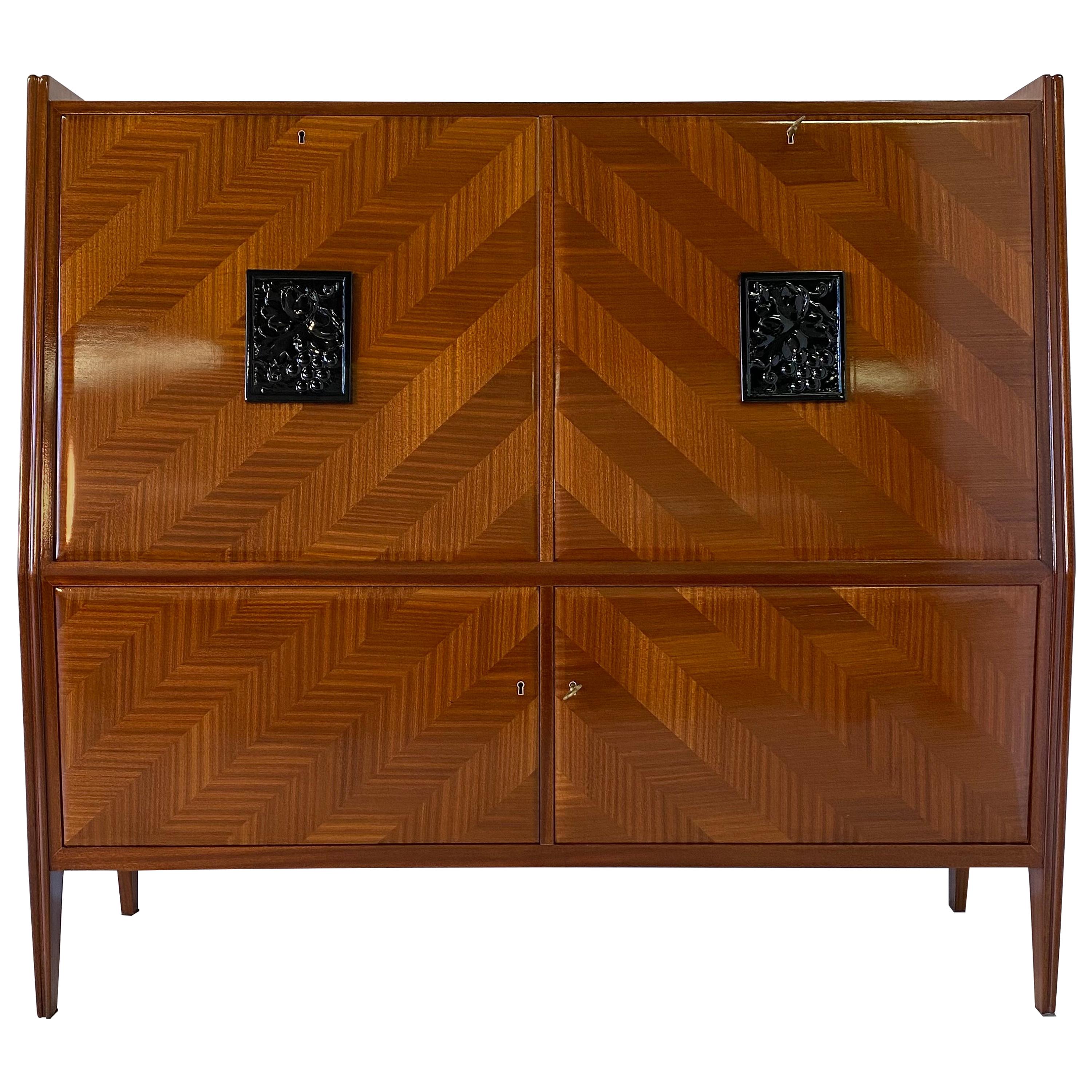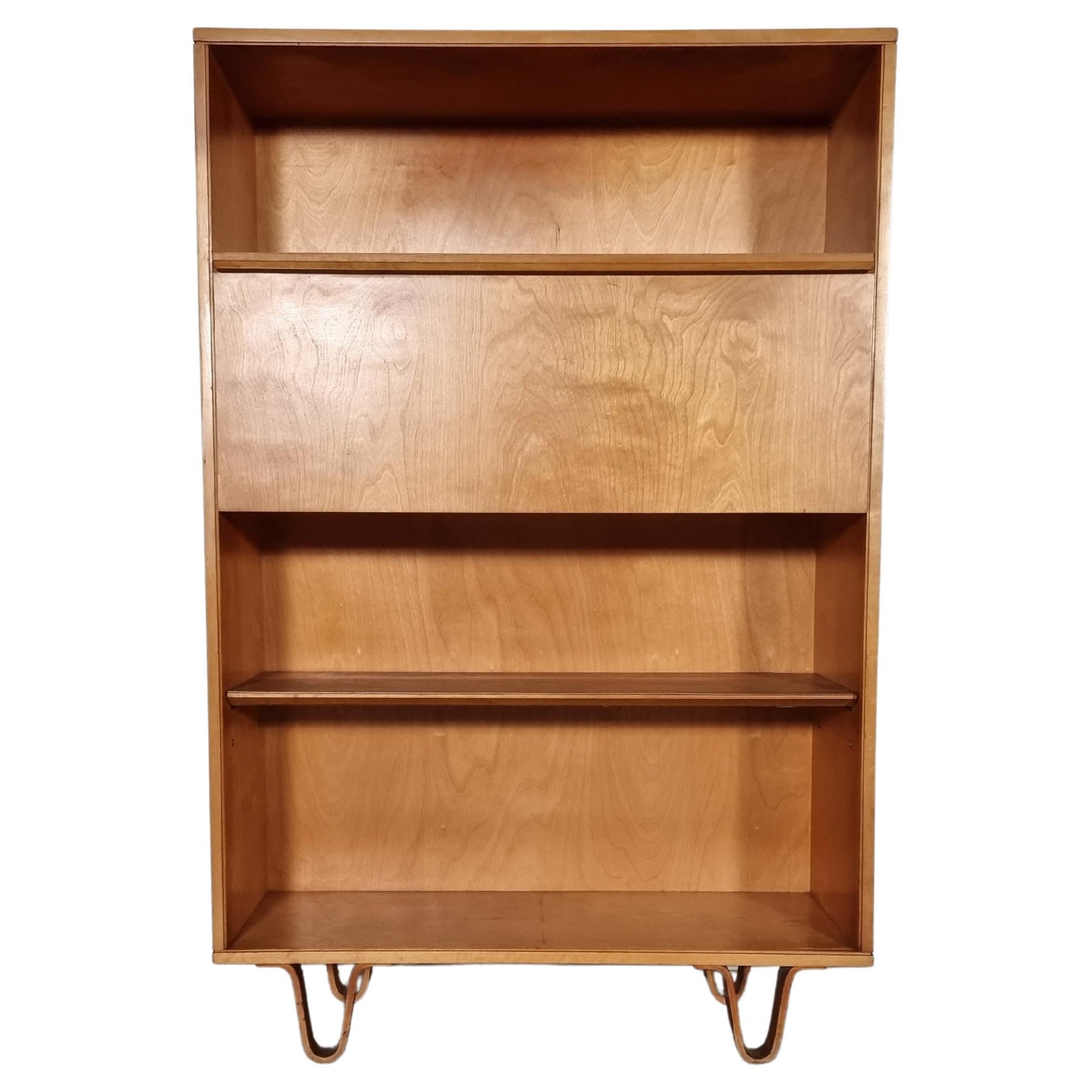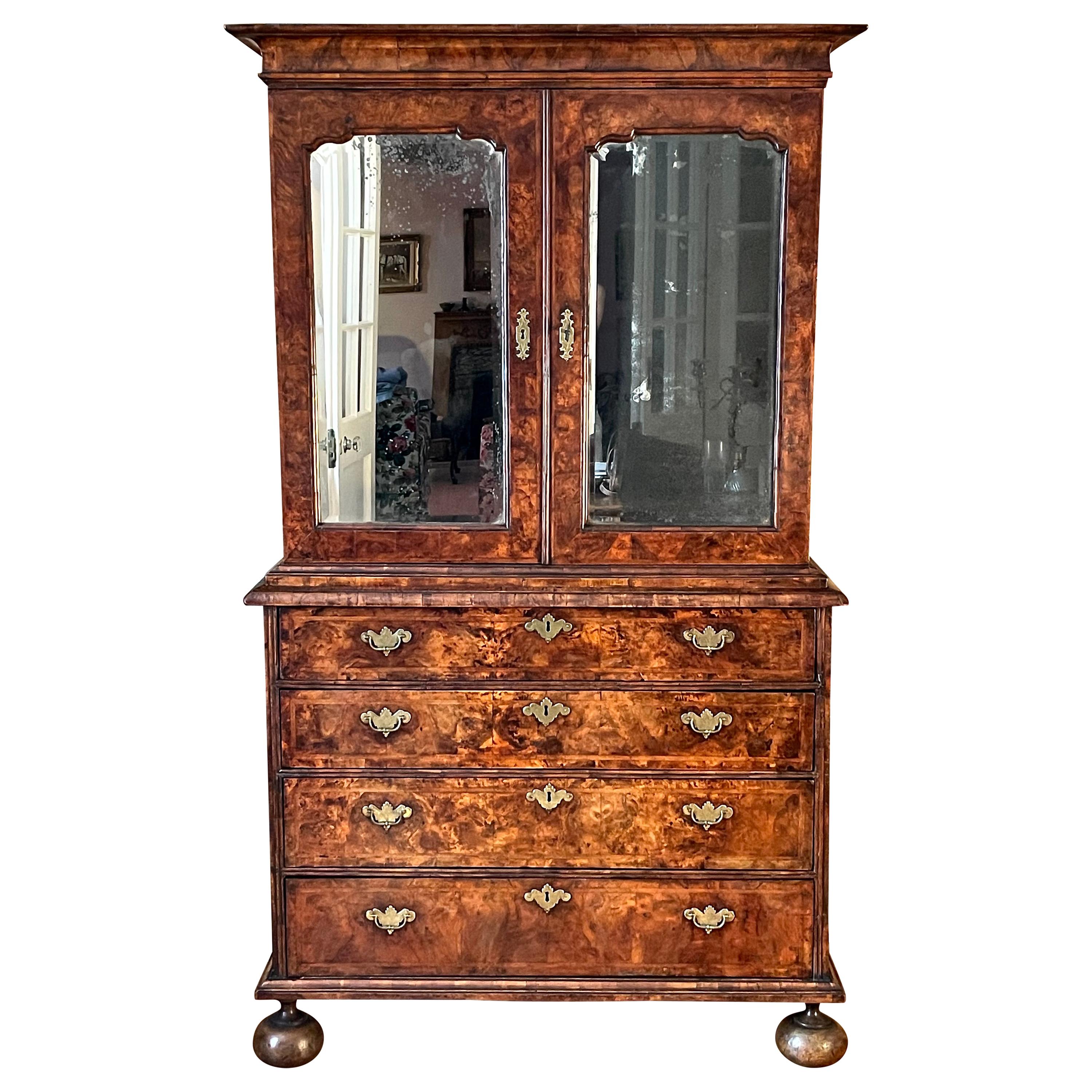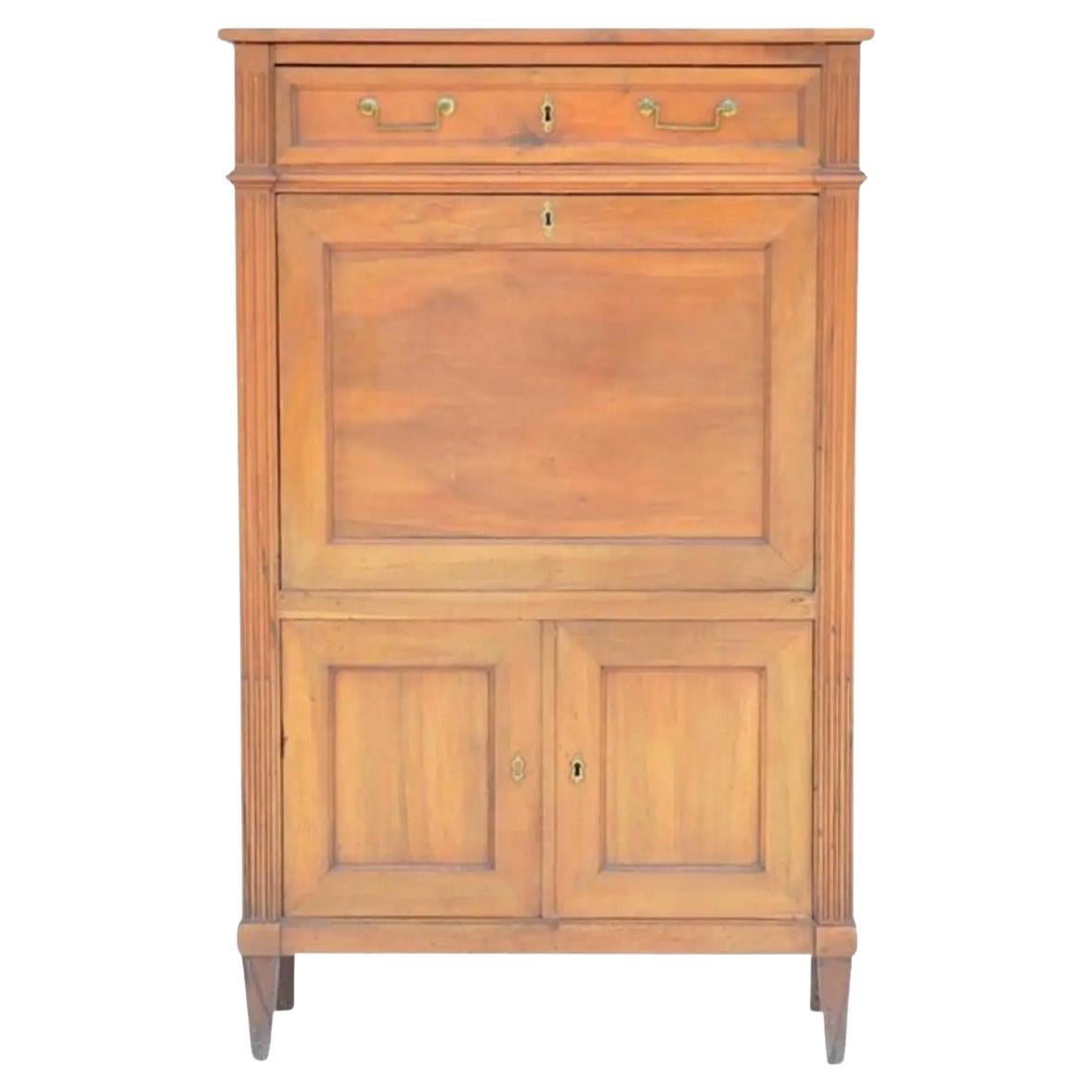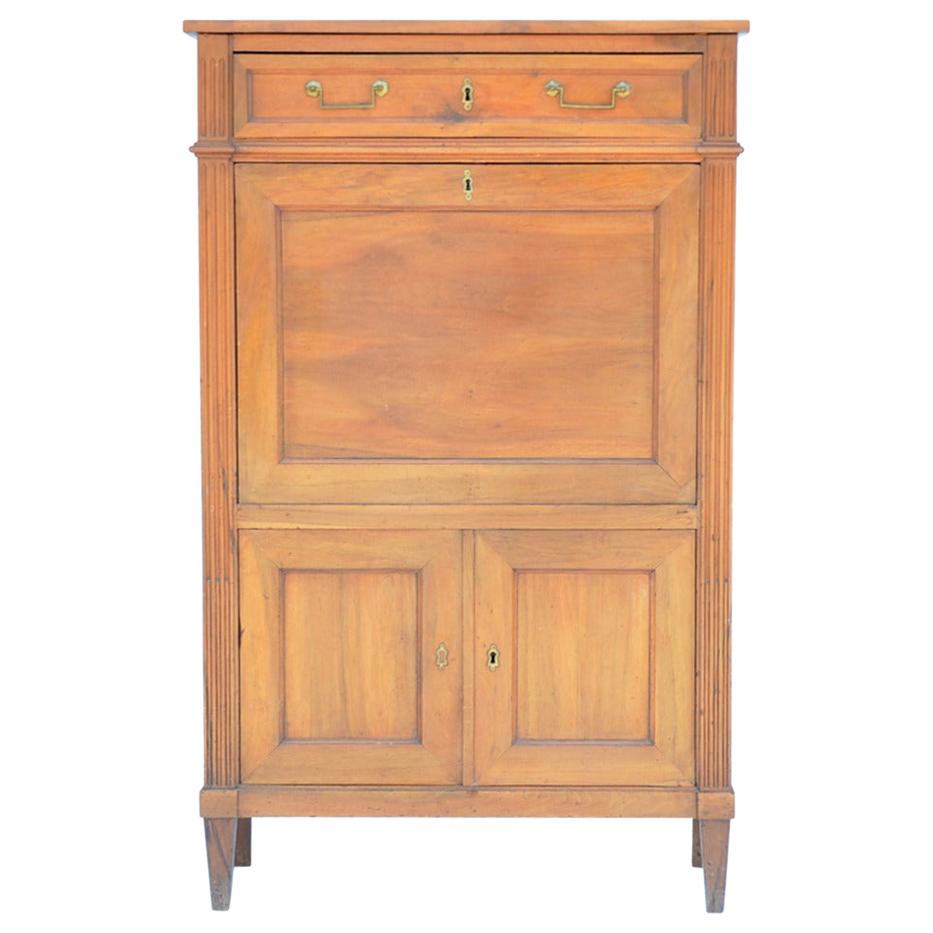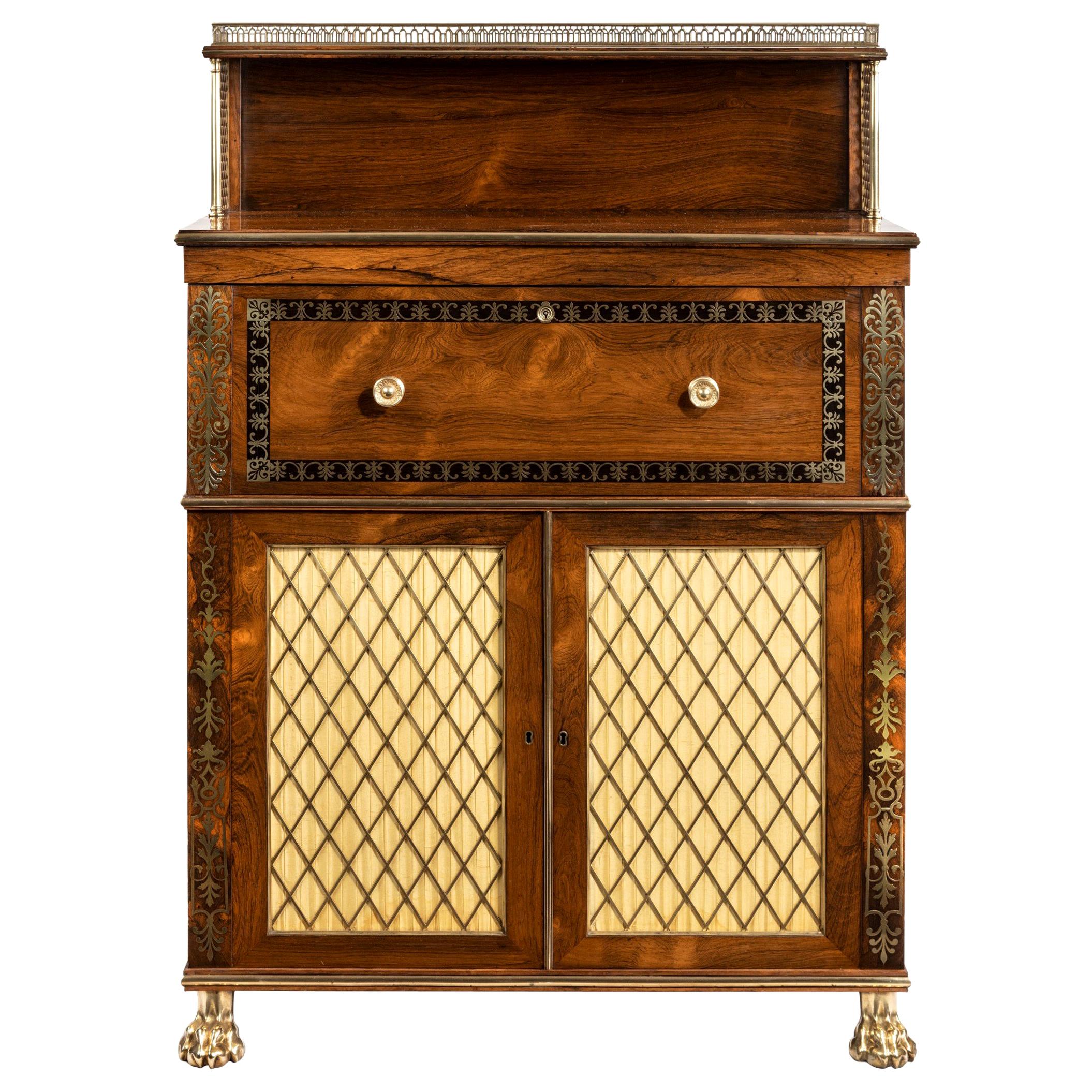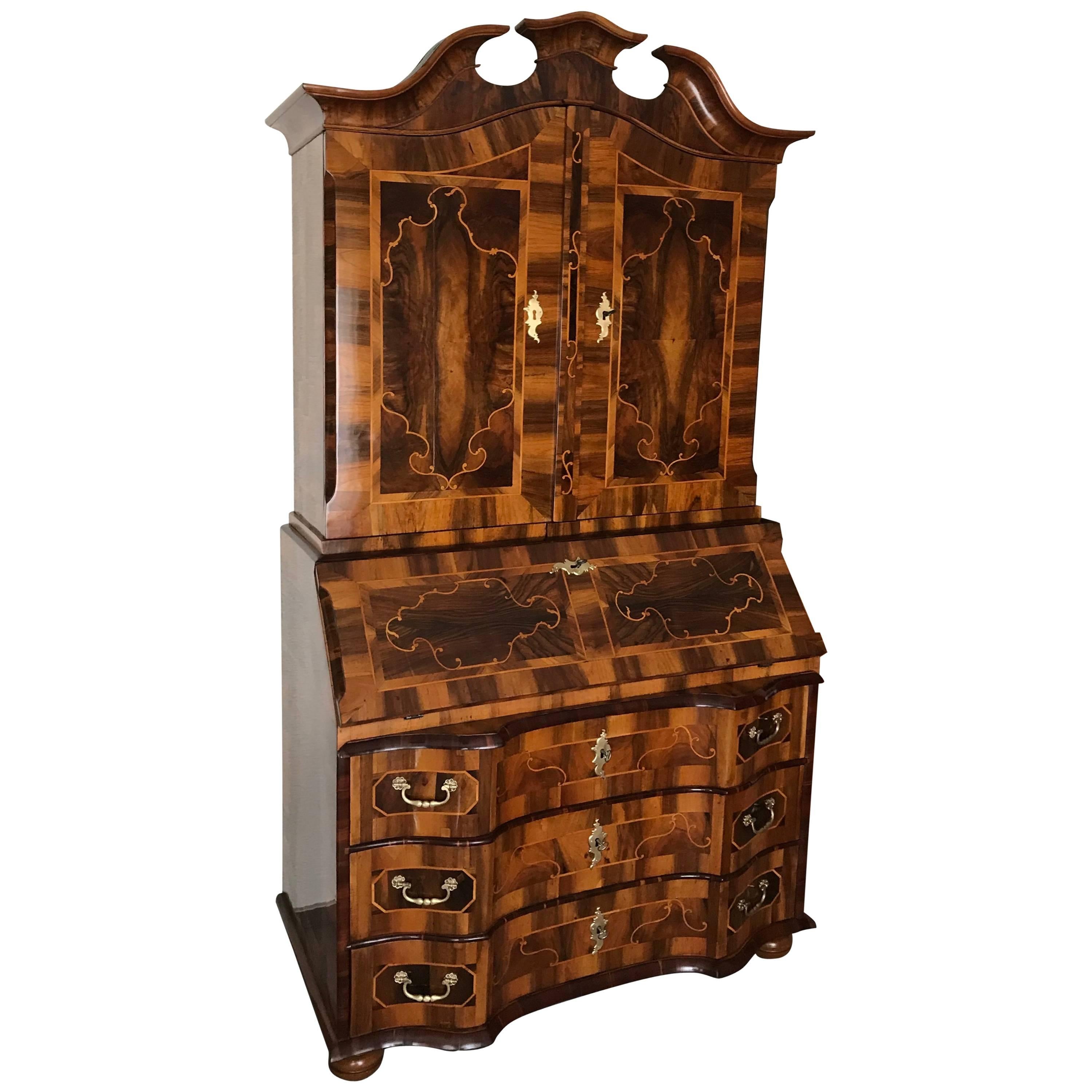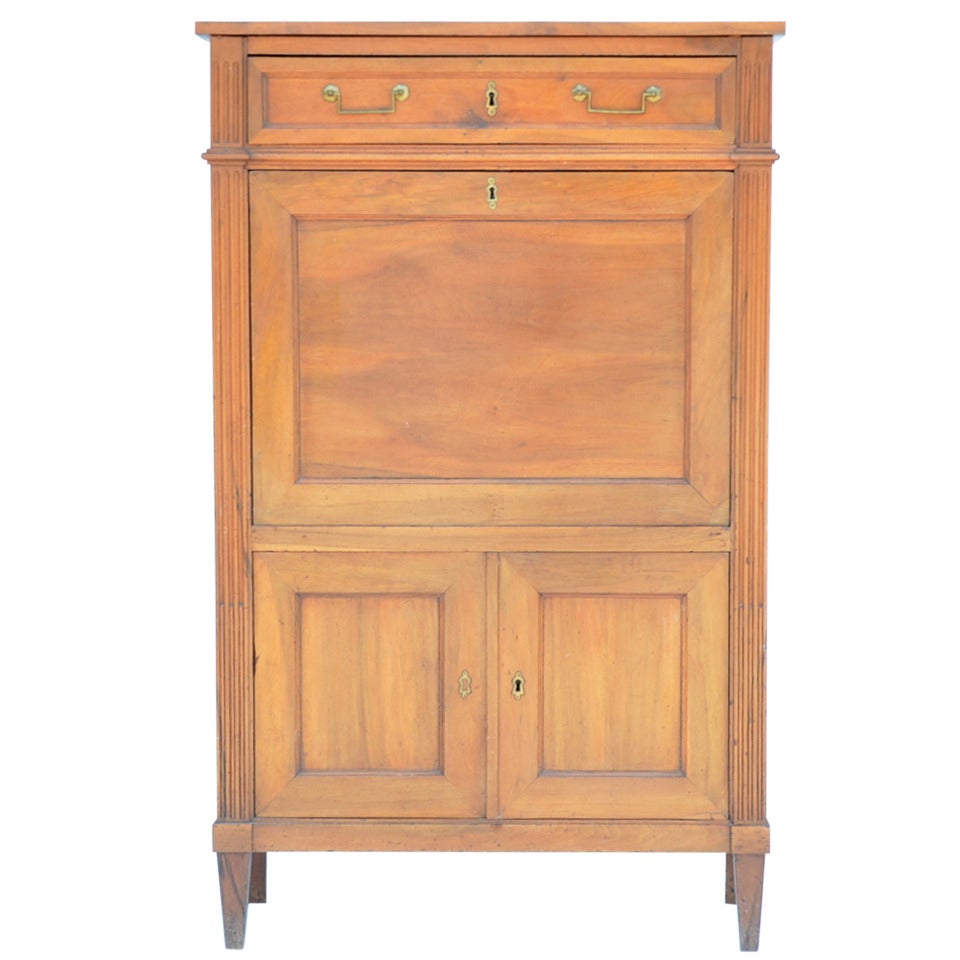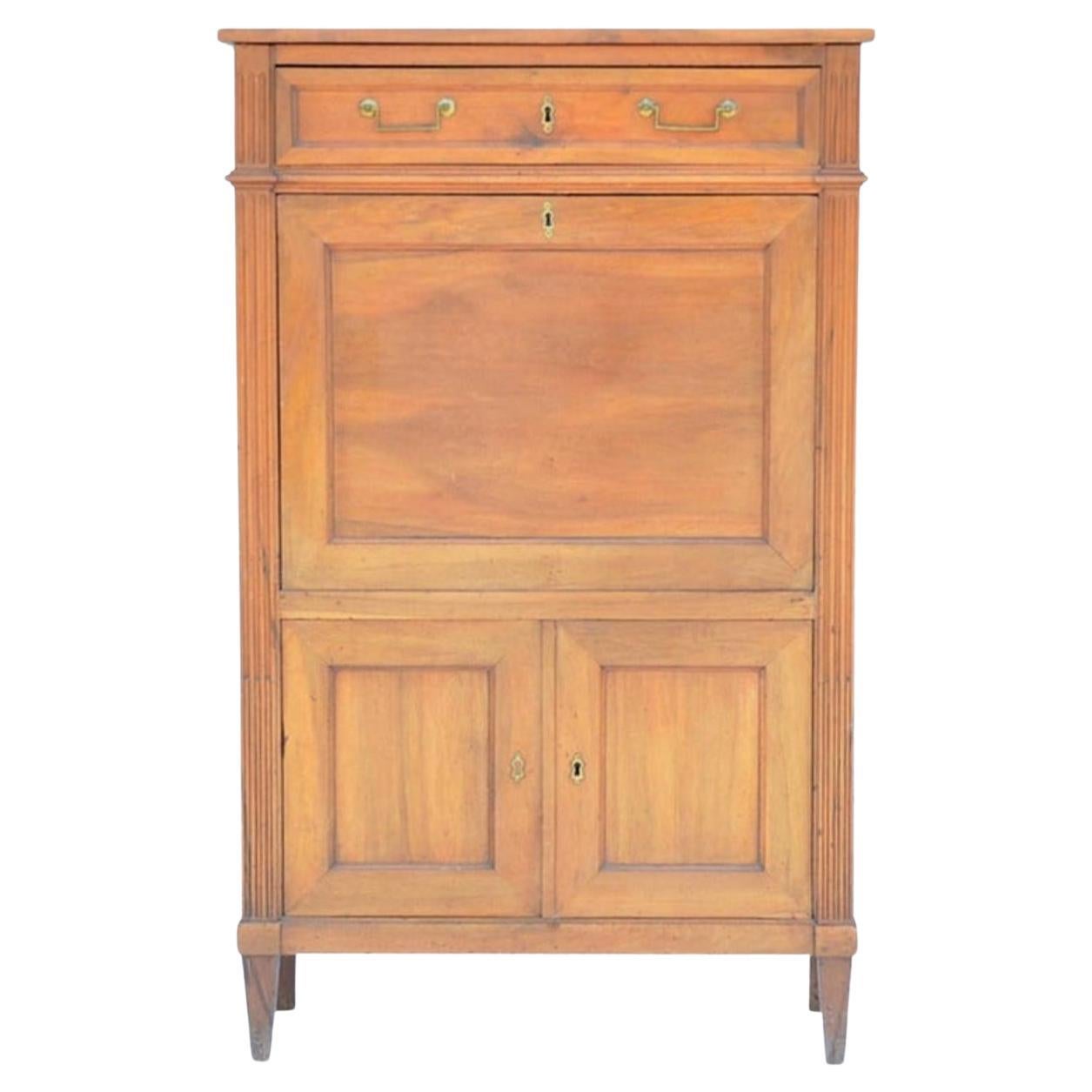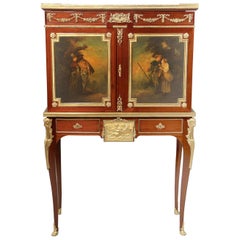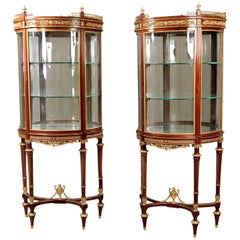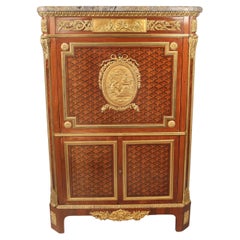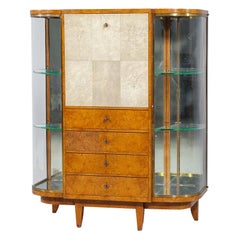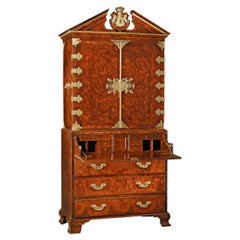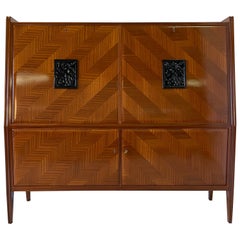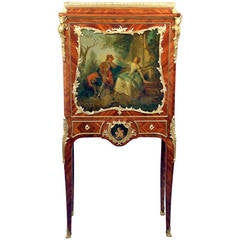
Secretaire Cabinet by Paul Sormani
View Similar Items
Secretaire Cabinet by Paul Sormani
About the Item
- Creator:Paul Sormani (Cabinetmaker)
- Dimensions:Height: 50 in (127 cm)Width: 24 in (60.96 cm)Depth: 14 in (35.56 cm)
- Style:Belle Époque (Of the Period)
- Materials and Techniques:
- Place of Origin:
- Period:
- Date of Manufacture:circa 1870
- Condition:
- Seller Location:New York, NY
- Reference Number:Seller: CC12151stDibs: LU90561280634
Paul Sormani
Paul Sormani, counted among the most elite Parisian ébénistes of the 19th century, used the foundation of Louis XV and XVI styles for his meubles de luxe (luxurious furnishings).
Sormani received enormous attention as one of Paris’ finest and most influential ébénistes and earned worldwide acclaim by displaying his pieces at many of the world’s leading exhibitions. At the 1867 Exhibition Universelle in Paris the celebrated designer received an award and was described in the exhibition journal as “...a distinguished ébéniste of Paris, whose works deservedly attracted the attention of the public, and received the marked approval of the connoisseur.”
Empress Eugénie, wife of Napoleon III, decorated her palaces with beautiful creations by Paul Sormani whose designs were of a select few favored by the Empress. Revivals of Louis XV and XVI pieces were in high demand among affluent Parisians, and Sormani created many of the finest and most important furnishings of the period.
Find authentic Paul Sormani case pieces and storage cabinets, tables and other furniture on 1stDibs.
(Biography provided by M.S. Rau)
- Late 19th Century Gilt Bronze-Mounted Vernis Martin Cabinet by Paul SormaniBy Paul SormaniLocated in New York, NYA fantastic quality late 19th century Louis XV style gilt bronze-mounted Vernis Martin cabinet By Paul Sormani. The upper tier of the cabin...Category
Antique Late 19th Century French Belle Époque Cabinets
MaterialsBronze
- Fantastic Pair of Late 19th Century Vitrines by Paul SormaniBy Paul SormaniLocated in New York, NYA fantastic pair of late 19th century Louis XVI style gilt bronze mounted demilune vitrine. By Paul Sormani. Each with balustrade galleries and raised on spiral decorated legs ...Category
Antique Late 19th Century French Belle Époque Vitrines
MaterialsBronze
- Special 19th Century Gilt Bronze Mounted Inlaid Parquetry Secretaire a AbattantBy Jean-Henri RiesenerLocated in New York, NYA Special Late 19th Century Gilt Bronze Mounted Inlaid Parquetry Secretaire a Abattant The shaped marble top above a long center frieze drawer with a large central bronze plaque of putti at play, the beautiful parquetry drop-down door centered with an elliptical gilt bronze panel depicting ”A Sacrifice to Love”, a classically dressed woman presenting an infant to Cupid, who stands on a pedestal, the plaque has ribbon tied flowers, the inside centered with a mirror surrounded by drawers and pigeonholes, the fall-front itself provides a black leather writing surface, the bottom doors opening to two more drawers and a shelf, the sides decorated with similar parquetry designs. This piece is a copy of the 18th century Secretaire by Jean-Henri Riesener which is presently in the Wallace Collection...Category
Antique Late 19th Century French Belle Époque Cabinets
MaterialsMarble, Bronze
- Very Fine Late 19th Century Gilt Bronze Mounted Commode by Paul SormaniBy Paul SormaniLocated in New York, NYA very fine late 19th century Louis XVI style gilt bronze-mounted commode. By Paul Sormani Beautiful marble top, above a bronze frieze, with one long drawer above two deep long...Category
Antique Late 19th Century French Belle Époque Commodes and Chests of Dra...
MaterialsMarble, Bronze
- Fine and Grand 19th Century Gilt Bronze Mounted Vitrine/Bookcase By Paul SormaniBy Paul SormaniLocated in New York, NYA Fine and Grand Late 19th Century Transitional Style Gilt Bronze Mounted Vitrine/Bookcase By Paul Sormani Paul Sormani A long marble top above a bronze frieze with two glass cente...Category
Antique Late 19th Century French Belle Époque Cabinets
MaterialsMarble, Bronze, Ormolu
- 19th Century Gilt Bronze and Sèvres Style Porcelain Mounted Parquetry CabinetBy Adam WeisweilerLocated in New York, NYA beautiful late 19th century Louis XVI style gilt bronze and Sèvres style porcelain mounted parquetry cabinet. A marble top above a single door adorned with Sèvres style porcelain plaques, the large plaque...Category
Antique Late 19th Century French Belle Époque Cabinets
MaterialsMarble, Bronze
- Art Deco Secretaire Cabinet by Jules DeroubaixBy Jules DeroubaixLocated in North York, ONThis Jules Deroubaix display cabinet secretaire is timeless, functional, and effortlessly chic. Made of burl sandalwood, it showcases a drop door paneled wit...Category
Vintage 1930s French Art Deco Secretaires
MaterialsChrome, Brass
$16,800 Sale Price20% Off - King George I Ambassadorial Secrétaire-CabinetLocated in New Orleans, LAThis highly important secrétaire-cabinet was crafted for and specially ordered by King George I for the British Ambassador to Russia. From its craftsmanship and materials to its exceptional artistry, it is a work of royal and historic significance that exudes power in each and every detail. The broken pediment at its apex features the simplified royal coat of arms bearing the king’s crown, while the interior is adorned by portraits of the British Royal Family. Placed within the ambassador’s St. Petersburg home, this entirely unique piece of furniture would have been a potent reminder of England's grandeur and political importance. Relations between England and Russia during this period were at an all-time high. Peter the Great had traveled to England in 1698 as part of his widely known “Grand Embassy” tour, wherein he attempted to gain foreign support against the Ottoman Empire. He spent a period of nearly four months there, meeting with King William III and his court on numerous occasions. Noted academic Arthur MacGregor wrote concerning the impact of the trip, “For two decades following Peter's visit, British influence in Russia reached a peak. It manifested itself in social custom, in craft practice and in ships and naval organization... it reached a significant sector of the population before relations cooled once again and the two nations pulled back from this era of unprecedented cordiality.” First and foremost, however, it is a reminder of British might and influence. By the reign of King George I, England had come into its own as a world power. Unique in its design, this cabinet is a reflection of the country’s might. It is crafted from the highest-quality solid walnut and burr walnut adorned by gilded lock plates and engraved hinges. The presence of ormolu at its apex and lining the doors was a rarity for this period, and its addition makes manifest the importance of the design. The outer doors open to reveal multiple interiors, including fifteen separate drawers around a central cupboard; the cupboard doors each bear mezzotint portraits of George I and his father, Ernest Augustus, Elector of Hanover. An etching after the portrait of George I dating to circa 1716 is in London’s Royal Academy. A second, inner pair of doors are adorned by mezzotints of the Prince and Princess of Wales (later Queen Caroline and George II), which are both after portraits by Sir Godfrey Kneller dated 1716 in the Royal Collection. A final portrait is revealed on the very interior of the cabinet, where a mezzotint of Frederick, Anne, Amelia and Caroline, children of the Prince of Wales, resides. An etching (circa 1715-1720) after this portrait can be found in the National Portrait Gallery (London). Apart from its abundance of royal portraiture, the cabinet features stunning painted decoration, including floral designs as well as clouds, birds and trees in a bucolic motif reminiscent of Eden. Its lower portion is a study in both form and function, featuring a fitted secrétaire-drawer above three additional drawers for storage. The cabinet appears in The Shorter Dictionary of English Furniture by R. Edwards from 1964, a text that is regarded as the bible of British furniture design. Edwards describes it as a “writing cabinet...given by George I to the British Ambassador at the Russian court.” The cabinet was likely made for the 18th-century German diplomat and writer Friedrich Christian Weber, who represented English interests at the Russian court from 1714 until 1719. Although Weber’s tenure as ambassador was relatively short, while in St. Petersburg, he authored his account entitled Das veraenderte Russland (The Present State of Russia), which was published in three volumes in 1721, 1739 and 1740. It may, however, also have been made for George Douglas, 2nd Earl of Dumbarton, who served as ambassador alongside Weber in 1716. Diplomatic relations ceased between the two countries in 1721. In 1928, the cabinet appeared for sale at the International Exhibition of Antiques & Works of Art in Olympia. It had previously been in the collection of the Woltner family of Bordeaux, the celebrated vintners who owned the estate Château Laville Haut-Brion and produced wine of the same name. According to the family, Monsieur Woltner was given the cabinet as a gift from an aunt who lived in Russia for many years. After leaving the Woltner collection, the cabinet was acquired by William Berry...Category
Antique 18th Century English Georgian Secretaires
MaterialsBrass
- Italian Mahogany Secretaire Cabinet, 1950sLocated in Meda, MBPrecious cabinet secretaire produced in Italy in the 1950s, The whole cabinet is veneered in mahogany with a fine solid wood carving in the center of the two doors representing two b...Category
Vintage 1950s Italian Mid-Century Modern Cabinets
MaterialsMahogany, Maple
- Cabinet Secretaire by Cees Braakman for Pastoe, 1950sBy Cees Braakman, PastoeLocated in amstelveen, NLA wonderful piece from the Birch - series with distinctive laced legs. Designed by Cees Braakman for Pastoe in the early 1950s. Bookcase with 2 shelves an...Category
Vintage 1950s European Mid-Century Modern Secretaires
MaterialsBirch
- Fine George I Burr Walnut Secretaire CabinetLocated in Lymington, GBA fine English George I-period burr (burl) walnut secretaire cabinet. Early-18th century, ca 1720. The top section separates from the base and opens to reveal numerous fitted drawers, behind doors with original bevelled arched mirror plates. The base contains a fall-front fitted secretaire with small drawers, two of which have secret drawers. Engraved mounts are contemporary if not original. All locks and cross-grained mouldings are original. Beautiful colour throughout with superb matched burr veneers within herringbone lines. Bun feet are original. Lined throughout in best quality English oak. The well-patinated green, gilt-tooled liner in the writing surface appears original. Very much in the style of John Old & William Ody. One of the most original early-18th century pieces of English walnut cabinet...Category
Antique 18th Century English George I Cabinets
MaterialsWalnut
- Regency Rosewood Secretaire Side Cabinet/ChiffoneerLocated in Folkestone, GBA superior quality and unusual Regency rosewood Side Cabinet, the top drawer with fold-down, leather-lined front, fully fitted with drawers and pigeon holes. below are a pair of silk...Category
Antique Early 19th Century English Regency Cabinets
MaterialsRosewood
